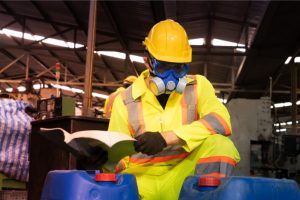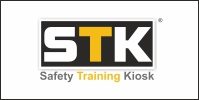 In the dynamic landscape of industrial environments, the presence of chemicals poses both unparalleled opportunities and significant challenges. This comprehensive article delves into the multifaceted realm of chemical exposure in the workplace, with a focus on industrial hygiene principles and strategies to ensure a safe and healthy working environment. From understanding the intricacies of chemical hazards to implementing robust industrial hygiene practices, this exploration aims to empower organizations to safeguard their workforce and foster a culture of well-being.
In the dynamic landscape of industrial environments, the presence of chemicals poses both unparalleled opportunities and significant challenges. This comprehensive article delves into the multifaceted realm of chemical exposure in the workplace, with a focus on industrial hygiene principles and strategies to ensure a safe and healthy working environment. From understanding the intricacies of chemical hazards to implementing robust industrial hygiene practices, this exploration aims to empower organizations to safeguard their workforce and foster a culture of well-being.
1: The Pervasive Nature of Chemical Hazards
Unveiling the diverse forms and sources of chemical hazards, this section provides a foundational understanding of the omnipresent risks in industrial settings. Whether in gases, liquids, solids, or fumes, recognizing the pervasive nature of chemical hazards sets the stage for a proactive approach to industrial hygiene.
2: Industrial Hygiene: A Shield Against Chemical Risks
Establishing the crucial role of industrial hygiene as a protective shield, this section introduces the core principles—Anticipation, Recognition, Evaluation, Control, and Confirm. Each principle is explored in-depth, illustrating how they collectively form a robust framework for managing chemical exposure in the workplace.
3: Chemical Exposure Pathways and Routes
Understanding how chemicals enter the body is essential for effective hazard management. This section dissects exposure pathways and routes, exploring inhalation, ingestion, absorption, and injection. Insights into these pathways inform targeted industrial hygiene measures to minimize risks associated with each route.
4: Identifying and Assessing Chemical Hazards
 Recognition of chemical hazards is a pivotal step in industrial hygiene. This section details strategies for identifying and assessing chemical hazards, encompassing the importance of Material Safety Data Sheets (MSDS), workplace surveys, and comprehensive risk assessments. Practical examples illuminate the process of hazard recognition.
Recognition of chemical hazards is a pivotal step in industrial hygiene. This section details strategies for identifying and assessing chemical hazards, encompassing the importance of Material Safety Data Sheets (MSDS), workplace surveys, and comprehensive risk assessments. Practical examples illuminate the process of hazard recognition.
5: Industrial Hygiene Monitoring Techniques
An exploration of industrial hygiene monitoring techniques unveils the methodologies for quantifying and assessing chemical exposure levels. From air sampling to personal monitoring and biological monitoring, this section provides a comprehensive guide for organizations seeking to implement effective monitoring programs.
6: Mitigating Risks Through Exposure Evaluation
Once chemical hazards are anticipated and recognized, the next step is evaluating exposure. This section delves into the intricacies of exposure evaluation, emphasizing the importance of a thorough Occupational Exposure Assessment. Real-world examples showcase the application of exposure assessment in diverse industrial scenarios.
7: The Hierarchy of Controls for Chemical Exposure
Navigating the hierarchy of controls is paramount in industrial hygiene. This section explores the hierarchy—elimination, substitution, engineering controls, administrative controls, and personal protective equipment (PPE)—guiding organizations in selecting the most effective measures to control chemical exposure.
8: Case Studies in Chemical Exposure Management
Real-world case studies illuminate successful approaches to managing chemical exposure. These cases span various industries, providing valuable insights into how organizations have addressed challenges, implemented controls, and fostered a culture of safety.
9: Regulatory Compliance and Best Practices
 A comprehensive overview of regulatory requirements and best practices for chemical exposure management is crucial for organizations aiming to uphold safety standards. This section navigates the complex regulatory landscape and provides practical guidance on achieving compliance.
A comprehensive overview of regulatory requirements and best practices for chemical exposure management is crucial for organizations aiming to uphold safety standards. This section navigates the complex regulatory landscape and provides practical guidance on achieving compliance.
10: Technological Innovations in Industrial Hygiene
In the era of technological advancement, industrial hygiene embraces innovative tools. This section explores how technology, including Industrial Hygiene 4.0 solutions, contributes to enhanced monitoring, data analytics, and overall effectiveness in managing chemical exposure risks.
11: Occupational Health Programs and Employee Training
The establishment of robust occupational health programs and comprehensive employee training is integral to chemical exposure management. This section outlines the key components of effective programs and emphasizes the role of continuous training in fostering a safety-conscious workforce.
12: Future Trends in Industrial Hygiene and Chemical Exposure Management
 Anticipating future trends is essential for organizations committed to staying ahead in chemical exposure management. This section explores emerging trends, from artificial intelligence applications to increased emphasis on mental health considerations, shaping the future of industrial hygiene.
Anticipating future trends is essential for organizations committed to staying ahead in chemical exposure management. This section explores emerging trends, from artificial intelligence applications to increased emphasis on mental health considerations, shaping the future of industrial hygiene.
“Safeguarding Workforce Well-being” concludes with a call to action for organizations to prioritize industrial hygiene in their operations. By understanding and applying the principles of anticipation, recognition, evaluation, control, and confirmation, businesses can navigate the complexities of chemical exposure, protect their most valuable assets—their people—and contribute to a safer and healthier industrial landscape.























































